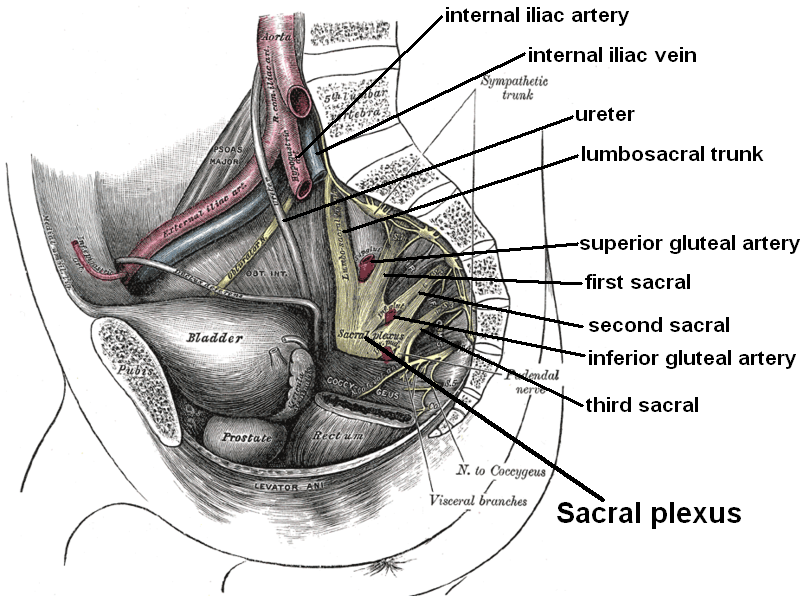Difference between revisions of "SACRAL PLEXUS"
From NeuroRehab.wiki
(Imported from text file) |
|||
| Line 1: | Line 1: | ||
[[Summary Article|<h5>'''SUMMARY'''</h5>]] | [[Summary Article|<h5>'''SUMMARY'''</h5>]] | ||
<br/>1. This is a triangular formation on the piriformis muscle. | <br/>1. This is a triangular formation on the piriformis muscle. | ||
<br/> | <br/> 2. Formed from L4 + 5 (lumbosacral trunk), S1 + 2 + 3 + 4. | ||
<br/>3. The constituent nerves divide into ANTERIOR and POSTERIOR divisions. | <br/>3. The constituent nerves divide into ANTERIOR and POSTERIOR divisions. | ||
<br/>4. It has 12 branches (6 before division + 6 after division). | <br/>4. It has 12 branches (6 before division + 6 after division). | ||
Revision as of 12:45, 27 December 2022
SUMMARY
1. This is a triangular formation on the piriformis muscle.
2. Formed from L4 + 5 (lumbosacral trunk), S1 + 2 + 3 + 4.
3. The constituent nerves divide into ANTERIOR and POSTERIOR divisions.
4. It has 12 branches (6 before division + 6 after division).

Image: Häggström, Mikael (2014). Medical gallery of Mikael Häggström 2014. WikiJournal of Medicine 1 (2). DOI:10.15347/wjm/2014.008. ISSN 2002-4436. [Public domain], via Wikimedia Commons [Accessed 27 Sep. 2019].
Reference(s)
R.M.H McMinn (1998). Last’s anatomy: regional and applied. Edinburgh: Churchill Livingstone.
Gray, H., Carter, H.V. and Davidson, G. (2017). Gray’s anatomy. London: Arcturus.